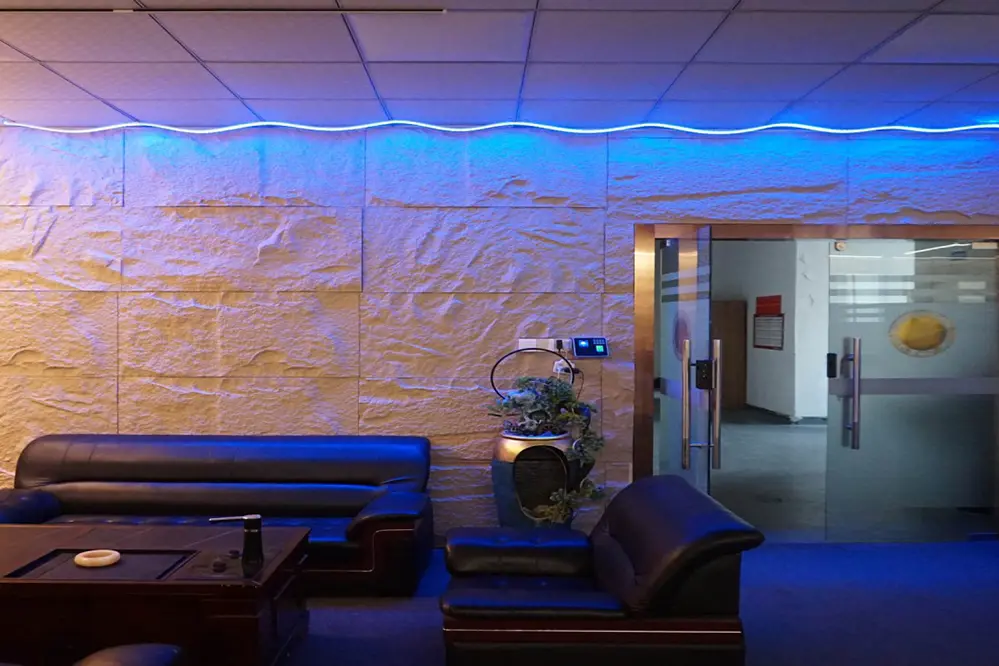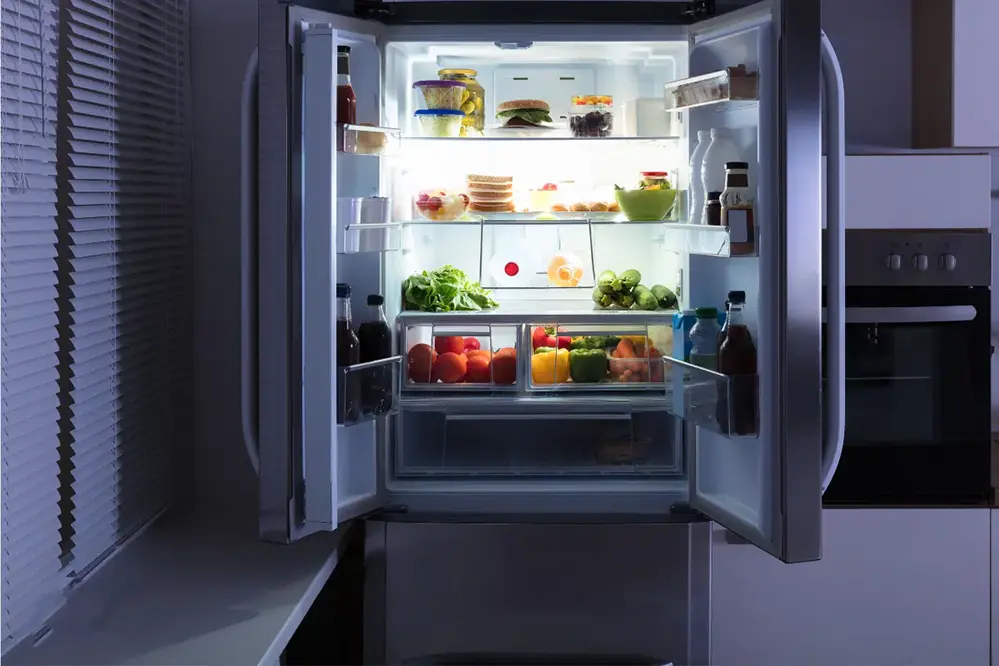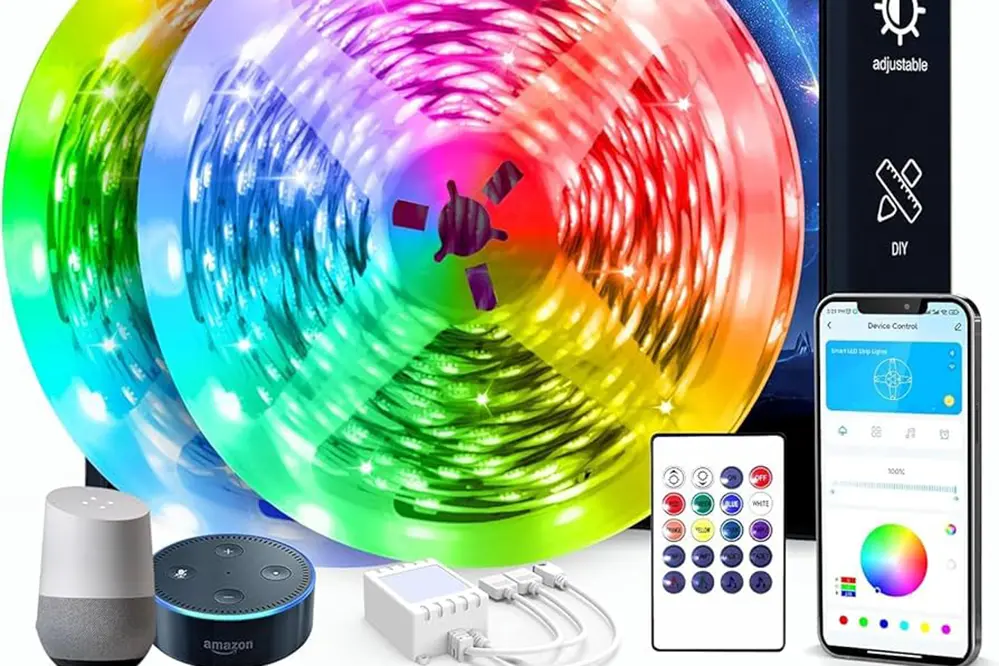“LED strips for growing plants are revolutionizing the way we approach indoor gardening,” says horticulture expert Dr. Emily Green. These innovative lighting solutions are transforming homes and urban spaces by enabling year-round plant growth.
The impact of LED strips extends beyond just aesthetics; they play a vital role in sustainable living and food security. As you explore this essential guide, you’ll discover how LED strips can enhance your gardening efforts and learn how to choose the best options for your needs.
Embark on this journey to unlock the full potential of your indoor garden.
Benefits of LED Strips for Plant Growth
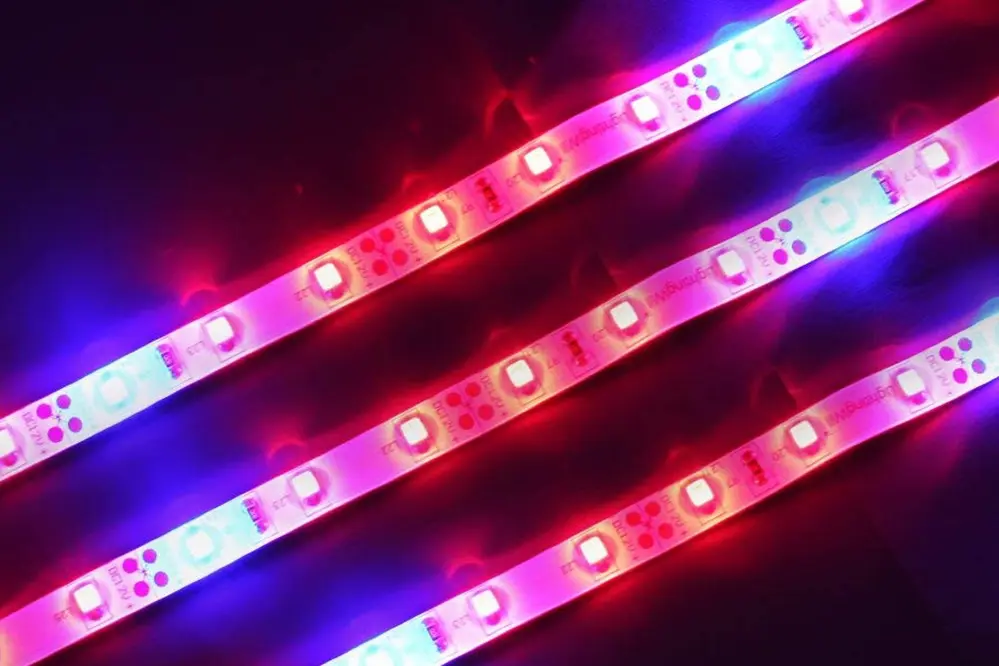
LED strips provide targeted-spectrum lighting that enhances the photosynthetic process, crucial for the robust development of plants, whether herbs or vegetables, and everything in between.
Furthermore, these versatile light strips significantly reduce energy consumption, saving costs.
Compared to traditional lighting options, LED strips produce little heat, minimizing the risk of scorching plants, unlike fluorescent lights which can emit more heat. This allows for a closer placement, maximizing light absorption and ensuring healthier growth, all while maintaining ideal conditions.
In addition, LED strips support year-round cultivation, unhindered by outdoor climate conditions. This feature is invaluable for urban gardeners who lack ample natural light, helping to bring the “greener” side of the world indoors, especially benefiting houseplants. By using these lights, seasonality becomes less of a “limit” in cultivating your dream garden.
Understanding LED Strip Technology
Diving into LED strip technology reveals an innovation that offers exceptional efficiency and adaptability, vital for plant growth enthusiasts, and urban agriculturists alike.
LED strips deliver precisely controlled light spectrums.
In essence, this technology is crafted to generate various wavelengths tailored to each phase of a plant’s life cycle. It achieves this through advanced semiconducting materials, which allow precise manipulation of light color, intensity, and distribution, thereby optimizing the photosynthetic efficiency for improved plant health and yield.
Moreover, the inherently sustainable nature of LEDs allows them to consume significantly less energy compared to traditional grow lights. Their longevity and minimal heat output create an ideal growing environment—consistently steady in both energy usage and thermal emission—keeping your plants thriving without overheating risks. By adopting this technology, gardeners can truly embrace a future where innovation meets sustainable agriculture, unlocking endless possibilities for nurturing lush greenery indoors.
Types of LED Strips for Plants
When selecting LED strips for growing plants, a plethora of options abound, each with distinct characteristics suited to various horticultural needs. Full spectrum strips, for instance, are designed to mimic natural sunlight, promoting overall plant health throughout all growth stages. Red and blue light strips, on the other hand, offer targeted support for flowering and vegetative phases. With options ranging from waterproof to flexible designs, choosing the right LED strip for your plants can significantly influence their vitality and productivity.
Flexible LED Strips
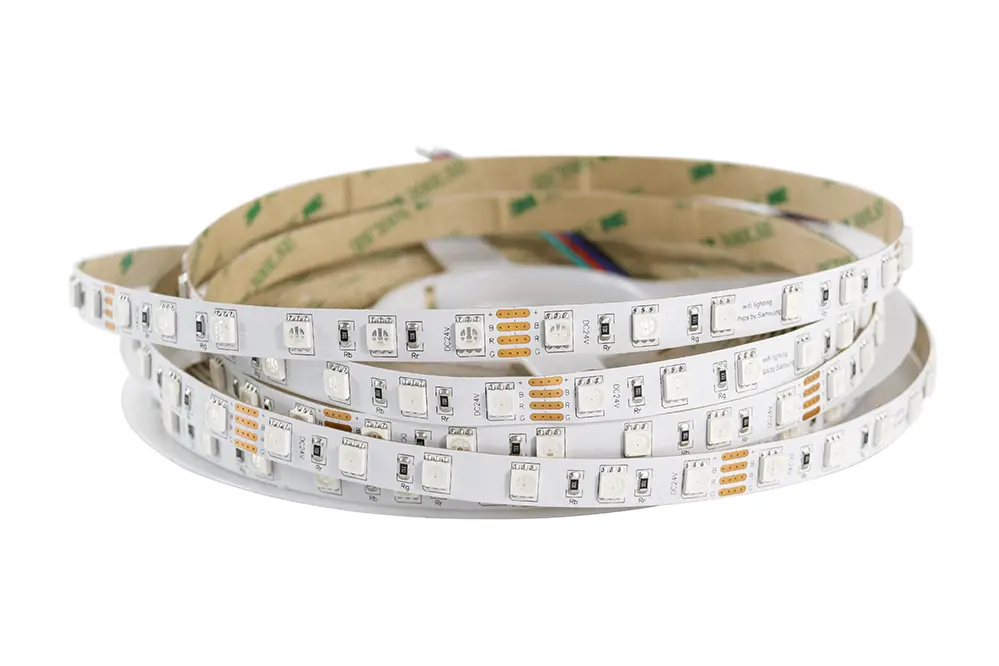
Flexible LED strips are revolutionizing indoor gardening—delivering adaptive, customizable light solutions tailored to enhance plant growth dramatically.
With unparalleled versatility in placement, flexible LED strips can illuminate even the most challenging spaces, ensuring optimal light duration for plant growth.
These strips allow gardeners to wrap, bend, and shape them around various fixtures, catering to diverse plant setups and unique spatial configurations. Such adaptability ensures your plants receive optimal lighting, aligning with their specific growth needs in a dynamic environment.
By investing in flexible LED strips, you are embracing a transformative gardening experience—one where flexibility and innovation converge—providing exceptional growth conditions through the seamless arrangement of these adaptable technological solutions.
Rigid LED Strips
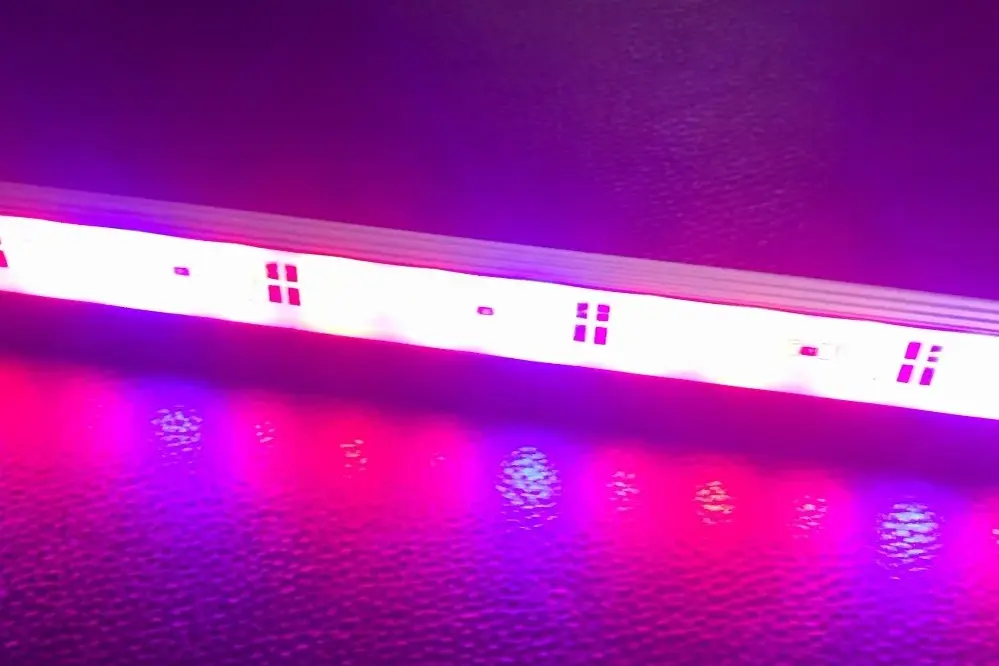
Rigid LED strips offer a robust solution for indoor gardening enthusiasts seeking durability and efficiency in their lighting systems.
Introduced in recent years, these innovative strips, characterized by their solid form factor, have gained popularity among growers aiming to provide consistent, fixed lighting environments. Their design ensures stability, making them ideal for permanent installations where repositioning is minimized, catering to specific plant growth requirements.
What sets rigid LED strips apart is their ability to maintain a stable configuration. This translates into a constant light beam that can be strategically directed over the plants, optimizing photosynthesis processes and promoting healthy, uniform growth across various plant species.
Consider the benefits of space efficiency when deploying rigid LED strips, allowing them to fit seamlessly into shelves or racks without the risk of sagging. By maintaining their shape and position, they are perfect for vertical farming setups, greenhouses, and other structured growing environments, amplifying the impact of your horticultural endeavors.
Incorporating rigid LED strips into your growing plan provides consistent, high-quality light distribution, contributing positively to your plants’ development and your garden’s overall success.
Choosing the Right LED Strip for Your Plants
Selecting the appropriate LED strip entails a balance of technical considerations, alongside your specific horticultural needs. Start by evaluating the light’s spectrum, ensuring it encompasses the necessary wavelengths for different growth stages, from seedlings to flowering, to foster robust plant development.
When assessing the brightness of an LED strip, measured in terms of “lumens output,” remember that it should be a function of your plants’ requirements. Consider the coverage area and the intensity of light needed for optimal photosynthesis. By matching the intensity with the plant type, you can ensure that your greenery receives sufficient nourishment, ultimately leading to a flourishing indoor garden.
Consider Plant Type and Growth Stage
Understanding the specific needs of your plants is critical when selecting LED strips for optimal growth and vitality.
Different plants, at various developmental phases, require unique light spectra and intensities. Young seedlings, for instance, thrive under softer, blue light which encourages healthy root and leaf development, while mature flowering plants demand red light to augment blooming. Tailoring light conditions to these distinct stages ensures your plants receive the specialized support they need to flourish.
Simultaneously, think about how a plant’s species influences its lighting requirements, potentially researching tutorials on YouTube for specific care tips. Exotic orchids, known for their precise light preferences, necessitate specialized setups, whereas robust vegetables like tomatoes can adapt to a broader light spectrum. Knowing your plant’s native conditions and where it thrives naturally enables targeted adjustments for LED lighting.
Ultimately, consideration of both plant type and growth stage is indispensable for selecting LED strips that cater to your garden’s diverse needs. By customizing your approach to these factors, you not only guarantee the well-being of your plants but also harness the full potential of LED technology. This thoughtful application fosters an environment conducive to robust, thriving growth, transforming your indoor garden into a vibrant oasis.
Evaluate Light Intensity and Spectrum
Selecting the correct light intensity and spectrum for your plants is paramount to unlocking the potential for optimal growth and health.
Different plants have unique needs, requiring specific light conditions for maximum support.
Understanding the fundamental aspects of light intensity and its interaction with plant biology is essential. Low light can inhibit growth, while excessive light can lead to stress or damage. Both scenarios limit the plant’s health.
To achieve the best results, consider the wavelength range that resonates with a plant’s photosynthetic activity, often denoted as “PAR” or photosynthetically active radiation. LED strips can target these key spectrums, supporting all growth phases, from seedling to fruiting, ensuring vibrancy and resilience in your indoor garden.
Installation Tips for LED Strips
Planning is key to successful LED strip installation.
Before embarking on your installation journey, take careful measurements of your growing area. This foresight will allow you to select strips that perfectly accommodate the unique dimensions of your indoor setup, ensuring even light distribution. Furthermore, make use of the included instructions for the placement of LED strips in optimal positions for maximum illumination.
Use adhesive mounting for easy setup.
It’s crucial to consider the power source – be it through an existing outlet or via battery backup in case of outages – and the required voltage compatibility and low-maintenance design.
The latest installations leverage innovative technology with integrated smart controls, allowing you to regulate your lighting conditions, ensuring that in 2023 and beyond, your plants experience the most conducive growth environments. Consistently evaluate and adjust your setup as technology evolves, maximizing energy efficiency and fostering a thriving green space.
How to Optimize LED Placement
Effective optimization begins with understanding the specific light requirements of each plant species. Ensuring the LEDs are placed at an appropriate distance above the plants, researchers suggest aiming for a balance between ample coverage and intensity. Adjusting the angle also plays a critical role, enhancing the photosynthetic efficiency of the plants. Additionally, periodically adjusting the placement according to plant growth stages ensures your garden receives the best lighting regime possible; you can find tutorials on YouTube to guide you through these adjustments. This deliberate attention to detail empowers robust vegetative and flowering growth, bringing your indoor horticulture dreams to fruition.
Distance from Plants
The distance between LED strips and your plants is crucial to maximizing photosynthesis and plant health.
- Seedling Stage: Position LED strips 24-36 inches above seedlings to avoid light burn.
- Vegetative Stage: Lower the lights to 18-24 inches, offering stronger illumination for robust growth.
- Flowering Stage: During this phase, position lights 12-18 inches above for optimal brightness and bloom encouragement.
Adjusting the height according to plant growth stages allows continuous light optimization.
Consistently monitor plant responses and adjust LED distance to ensure optimal growing conditions.
Angling for Maximum Coverage
Optimizing light angles ensures even plant coverage.
The ideal angle maximizes photosynthetic opportunities. By adjusting LED strips to shine directly on foliage, you increase leaves’ exposure to essential light wavelengths, crucial for photosynthesis. Experimentation, however, may be the key, as the perfect angle significantly impacts the overall yield and quality of your indoor garden’s produce.
Strategically positioned angles illuminate plants from multiple sides.
Deep understanding of your plants’ spatial arrangement will help choose the most effective angles. Consider the directional light spread and canopy layers, ensuring an all-encompassing luminosity that leaves no part of your green sanctuary in shadow, thereby fostering uniform growth.
This strategic approach to lighting also harmonizes with the dynamic growth phases your plants undergo. As plants develop, their needs change, and so should the light angles—what initially was suitable may need a tweak for subsequent stages. Heightened awareness and responsive adjustments ensure each plant receives the precise amount of devotion necessary for thriving results.
Comparing LED Strips with Other Grow Lights
As avid supporters of horticultural advancement, LED strips represent a paradigm shift in plant growth technology, offering a transformative lighting experience that redefines indoor gardening’s potential.
Their unprecedented flexibility allows for precise light directionality, attributing to optimal plant positioning.
Historically, traditional grow lights have delivered robust results yet lack the adaptiveness seen with LED technology.
Compactness and energy efficiency make LED strips indispensable, reducing operational costs significantly compared to conventional options.
Moreover, the wide spectrum output mimics natural sunlight, supporting various plant developmental stages, enhancing photosynthesis, and promoting both vegetative and flowering phases efficiently.
Undoubtedly, the advent of these LED strips marks a new era that balances affordability with innovation, setting the standard for future horticultural practices.
Conclusion
In the rapidly advancing field of plant growth technology, LED strips have emerged as indispensable tools for both plant enthusiasts and professional horticulturists. These innovative lighting solutions offer unparalleled energy efficiency, longevity, and enhanced growth potential across a diverse range of plant species. Selecting the appropriate spectrum and intensity of grow lights tailored to your plants’ specific needs is crucial for unlocking these benefits. By integrating LED strips into your indoor gardening setup, you are not merely choosing a lighting option; you are making a strategic investment in the future of horticulture, embracing cutting-edge innovation and sustainability.
As companies continue to refine LED technology, the future promises even more sophisticated solutions for your gardening aspirations. These advancements ensure that your plants not only survive but thrive, contributing to a lush, vibrant environment that reflects the potential and vitality of sustainable innovation. By embarking on this journey with LED strips, you position yourself at the forefront of cultivating a healthier, brighter, and more prosperous botanical future, aligning with the ever-evolving demands of our environment.

